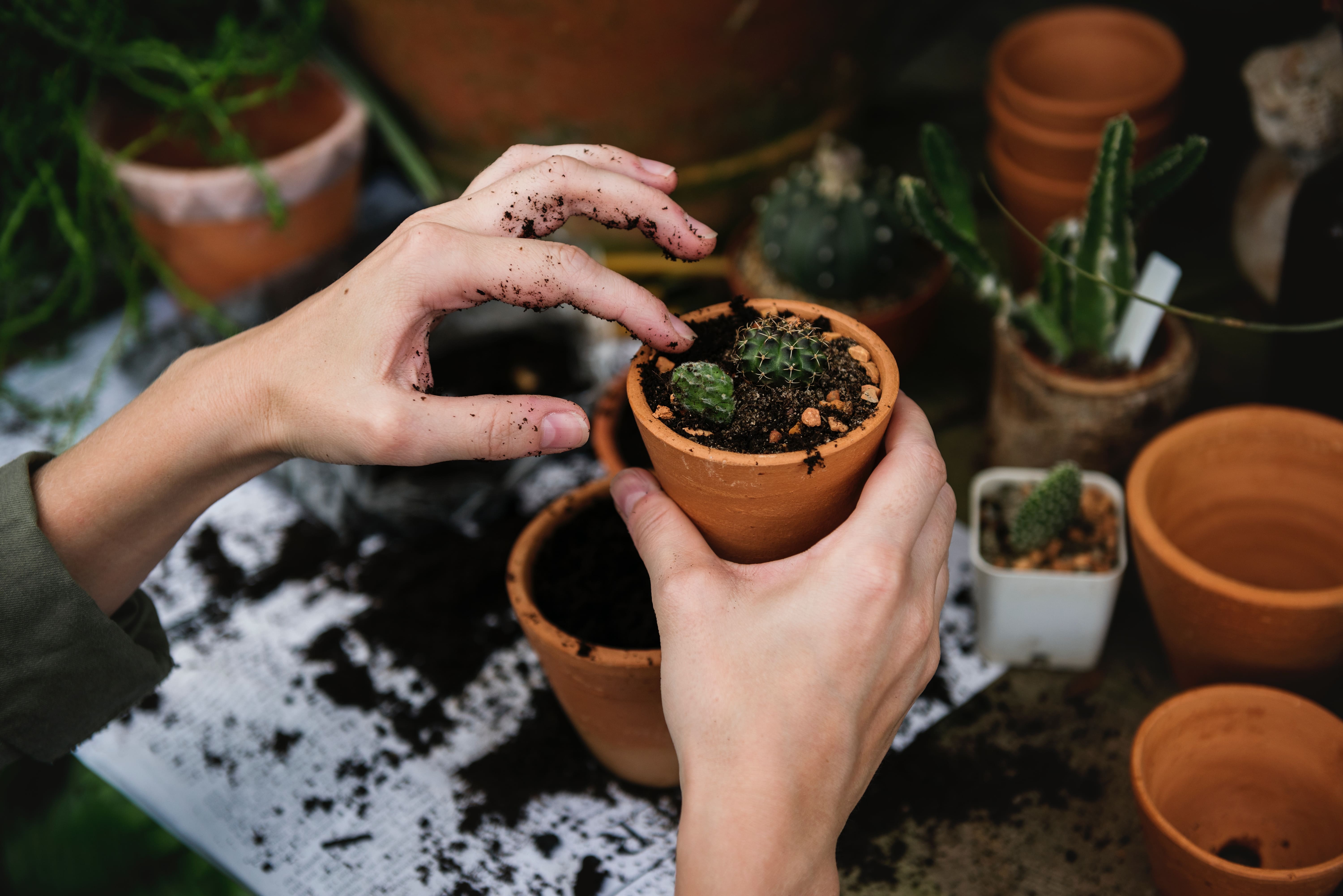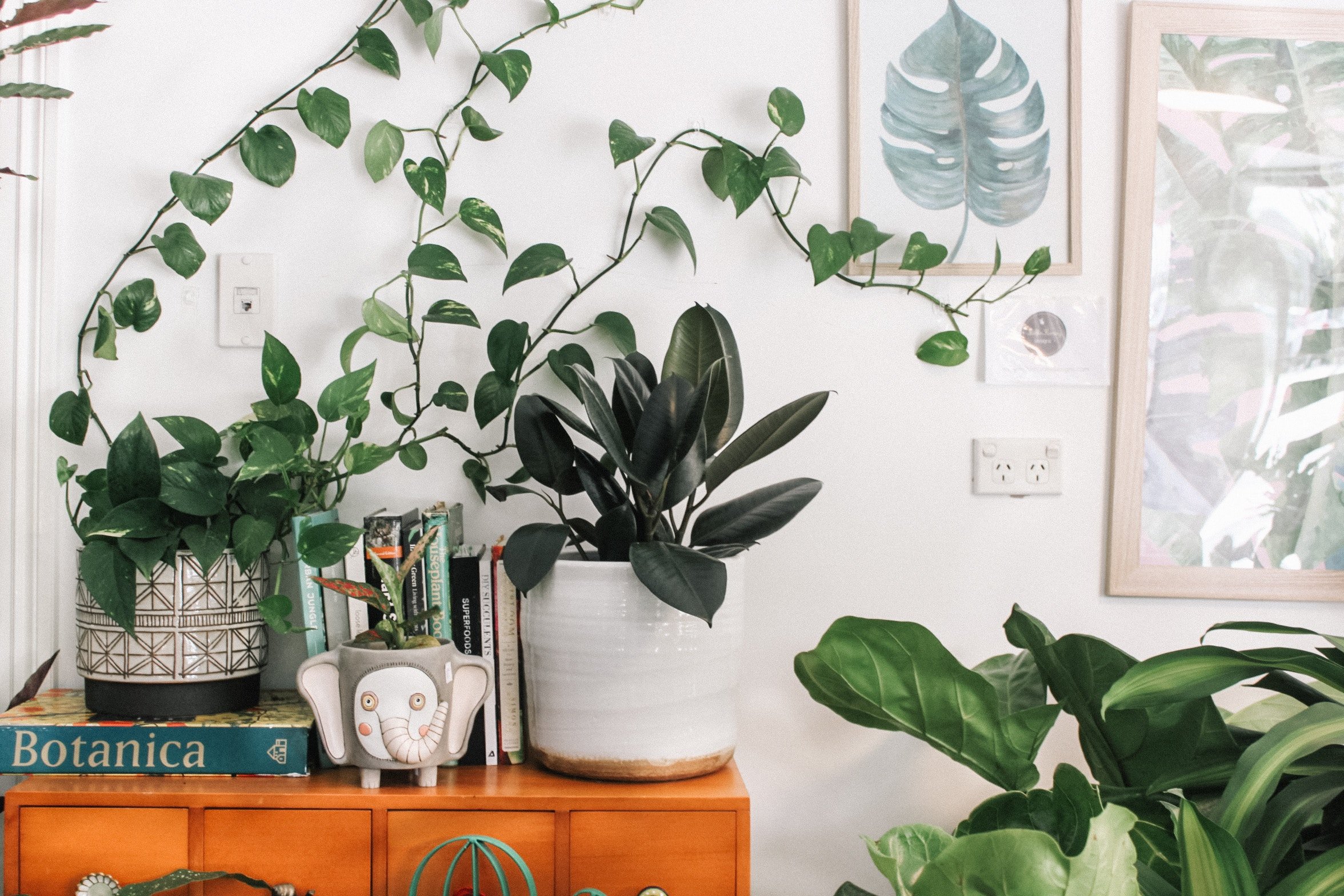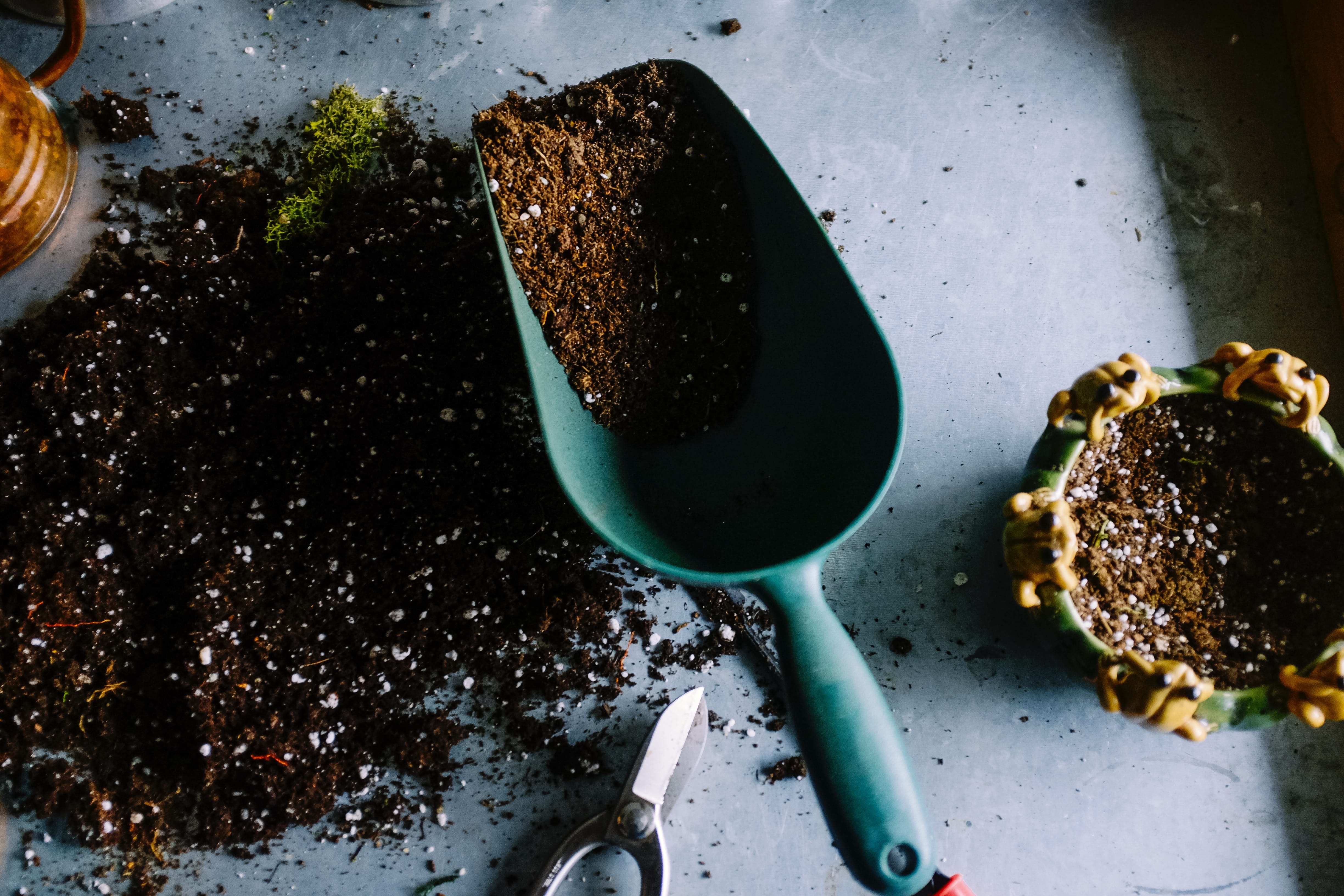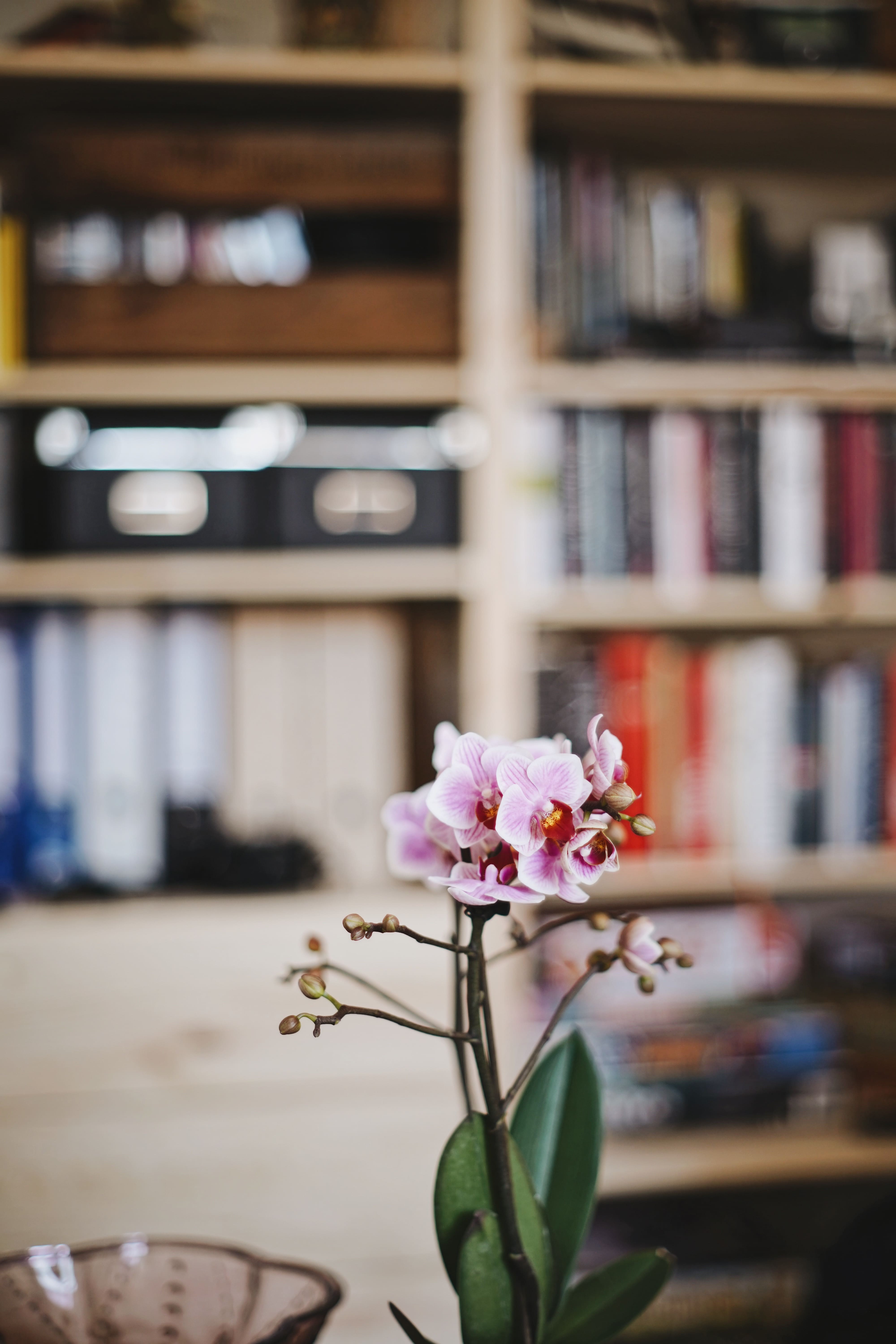In order not to inhibit the growth of your beloved greens, you should repot your indoor plants from time to time. You are probably wondering when the right time is, or how often your plant needs to be repotted. In short: How are indoor plants repotted correctly? We want to answer these and other questions for you. We will also use a few examples of indoor plants to show you how to repot correctly. Because timely repotting in fresh soil is the basis for vigorous growth and also provides a good supply of nutrients for the development of the plant. In this article you will find our simple and fun guide.

Spring or winter? At what time of year you should repot your houseplants
In general, you can repot your houseplants at any time of the year. However, the growth phase is best suited. In spring, your houseplant gets enough daylight and at the same time fresh soil with new nutrients. So repotting is the best condition for healthy and vigorous plant growth.
Of course you can also repot your plant in autumn or winter, for example if you notice that the clay pot is being cracked or the potting soil is exhausted. Then you shouldn't wait until spring, but take matters into your own hands immediately!
How often should I repot my houseplants?
Repotting the plant depends primarily on the type of plant. If your houseplant grows very quickly and has intensive root development, such as the rubber tree, then you should repot it into a larger container every year if possible. For slow-growing plants with relatively low nutrient requirements, like cacti, you'll have more time. Here it is enough if you repot them every two to four years.
So the rule here is: repot your plant every 1-4 years in spring, depending on growth!

Our 3 tips for repotting your houseplant correctly
Here we want to show you what you should consider when repotting your indoor plants. Not only the season is important, but also the right soil, the perfect pot and the care afterwards, such as watering or fertilizing.
1. The right pot
The correct size of the new pot is particularly important. Pot your plant in a container about 2-3 cm larger than the previous one. There should also be a small hole at the bottom so that excess water can drain off easily. This way the plant is stable and its roots can penetrate the new soil well again. Older houseplants, which no longer grow as quickly and do not have to be repotted every year, tend to need a pot diameter that is approx. 5-6 cm larger than the previous one.
Caution: If the pot is too big, this can also damage your plant. Slight waterlogging can form, which can lead to rotting of the roots.
Tip: Check your houseplants for aphids and spider mites before repotting. In this way you prevent them from spreading again in the new pot on the plant.
Example: Elephant foot
The decorative elephant foot is one of the easy-care indoor plants. But here, too, you should choose an optimal pot size. The new pot must not be too big, as the elephant foot will then put too much energy into its root growth instead of the beautiful trunk and lush green leaves. The vessel should only be slightly larger than the old one.In this way, root formation switches to economy mode and the elephant's foot can wonderfully develop its typical thick, bulbous trunk along with the leaves
2. This is how you recognize good potting soil for your houseplant
The right potting soil is also important when it comes to repotting. Indoor plants like soil that has a loose and crumbly structure. This way your plant gets enough air and oxygen, which it needs for its healthy development.
Special case: However, this soil is not suitable for orchids or cacti. You need a special substrate containing volcanic rock breathing flakes.
You can also tell good potting soil by its price. Therefore, avoid cheap goods that are not sterile and easily start to mold. It is therefore best not to make any compromises when it comes to the quality of the potting soil.

3. The care afterwards
After repotting your houseplant into a larger container, you should also water it properly. In this way you support the optimal growth of the plant. The water should not be too cold and the lime content should not be too high. It is best to water your plant through a saucer or with the help of planters.
A high-quality potting soil already contains fertilizer. That's why you only need to fertilize your plant 6-8 weeks after repotting.
Different houseplants - different repotting
However, the repotting of indoor plants cannot be generalized. Some plants are very sensitive when it comes to repotting or only tolerate certain soil. We show you the difference here using palm trees and orchids. Two very different types of plants with their own character and needs.
Example 1: Repot your palm tree correctly
Palm plants are now very popular and can get very old even in pots. However, it is also important here that you repot your graceful plant regularly and correctly.
Here we show you how to make the repotting a success:
- Water your palm tree before repotting so that the root ball doesn't fall apart
- Now remove the old pot very carefully: palm trees are very sensitive to root damage!
- Carefully peel off the used soil
- Carefully cut off the dead root parts with a sharp knife
As already mentioned, the soil should have a loose and crumbly structure. The palm also loves a small amount of peat, river sand and clay. In any case, the new pot must have enough drainage holes, as palm trees are very sensitive to waterlogging.
Example 2: The correct repotting of orchids
There are also a few things you should consider when repotting orchids. In its natural environment, the tropical orchid family does not grow on conventional soil, but on the branches of trees. For this reason, many orchids do not thrive in normal potting soil, but need special orchid soil.
You should repot your orchid every 2-3 years. In order for this project to succeed, we have a small guide for you:
- Carefully remove the orchid and its roots from the pot. A previous water bath makes it easier to remove from the old pot.
- Carefully remove the old soil here as well. But be careful not to break any roots.
- Cut off the dead dried roots.
Warning: Avoid repotting your orchid during its flowering period.The simultaneous rooting and flowering is very energy-intensive for the plant. If the orchid is flowering continuously, then carefully cut off the flower stalks when transplanting. This gives her more strength to find new footing with her roots in the special soil.
Freshly repotted, your orchid will shine at you again!

Repot indoor plants: new clothes for your plant
Just as children regularly need new clothes as they grow, your houseplants also need a new home from time to time. That means they have to be repotted. Once you've gotten into the routine of repotting, you'll quickly realize that it's actually not a big effort and you shouldn't shy away from it. You should only pay a little more attention to some plants, such as the orchid because of its special soil. But always remember: nothing is impossible.
So if your plant starts to explode its pot again, then it's time to get the soil out and let's get started!
.


















Leave a comment